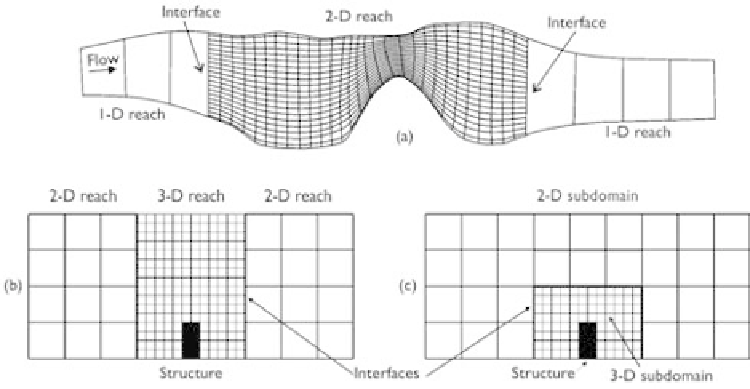Geoscience Reference
In-Depth Information
a single domain, so that the key issues are handling of the interfaces between subdo-
mains and arrangement of the overall calculations. These are discussed in the next
subsections.
8.2.2 Connection conditions
The solution domain can be partitioned into 1-D, 2-D, and 3-D subdomains in several
ways, depending on its shape. For a relatively narrow channel, the domain is often
divided into reaches as subdomains, as shown in Figs. 8.10(a) and (b). The 3-D model
is applied in the near-field reaches where the flow is strongly three-dimensional, the
1-D model is used in the far-field reaches, and the 2-D model is used in the reaches
between them. For a wide water body, the partition method shown in Fig. 8.10(c) is
often used instead. The 3-Dmodel is applied only in the regions around local structures,
while the 2-D (or 1-D) model is used in the other regions or over the entire domain
providing boundary conditions for the 3-D simulation around local structures. Like the
multiblockmethod in Section 8.1, the 1-D, 2-D, and 3-D subdomains can be patched or
overlapping at interfaces. For simplicity, only the patched interface is considered here.
Flow and sediment transport should satisfy continuity conditions at the inter-
faces between 1-D, 2-D, and 3-D subdomains, as discussed below (Wu, 1991;
Wu and Li, 1992).
Figure 8.10
Connections among 1-D, 2-D, and 3-D subdomains.
Water level
The water levels at the interfaces should satify
B
B
Bz
s
,1
d
=
z
s
,2
d
dy
=
z
s
,3
d
dy
(8.9)
0
0

